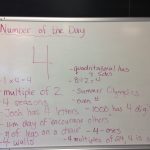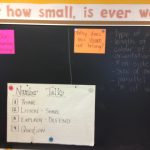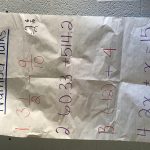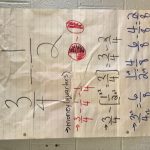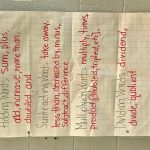We will examine how to bring the “Value of A NUMBER” to life for Grade 7 and 8 learners changing their view of mathematics. Number sense is the most important foundation that students can have and the basis for all higher-level mathematics. Firstly, teachers will explore what “Number Talks” looks like in the intermediate classroom. Secondly, collaborate on how to respond effectively to learners that share an incorrect solution or when there is a mistake in their work. Thirdly, how to build self-esteem and confidence in the learner, so they share solutions. Teachers may embrace technology as a vehicle of sharing in this project. Our goal is to teach students to understand the numerical relationships that are so critical to understanding mathematics, and in a short span of time (15 to 20 minutes/lesson), to provide students with a greater ability to solve mental math problems, have a deeper understanding of number sense and to engage them in open math discussions.
Team Members
Michelle Gallagher
Bluewater District School Board
Bridey McCartney
Bluewater District School Board
Mylène Ménard
Bluewater District School Board
Allison Kuhl
Bluewater District School Board
Professional Learning Goals
- Team effort in which everyone felt invested and comfortable being open in their discussions about their practice
- Made a plan and designed ways in which you could determine the effectiveness of Number Talks
- Ideally made a plan that spanned the course of at least one year
- Assigned specific book chapters to each PLC date to give us a framework
- As professionals, the most important piece that was understood through this experience was that change takes time, and some days we will have great Number Talks, while other times they may fall flat on their face… and that’s okay
Activities and Resources
- Build an understanding of what Number Talks looks like in the intermediate classroom
- Try various strategies to implement Number Talks
- Develop a routine
Unexpected Challenges
- Not having enough students actively participate, or only having the same three or four students share their thinking
- Finding enough time to implement before the actual lesson took place
- Interruptions (school-related)
- Having a related Number Talk to the current lesson
Enhancing Student Learning and Development
- Helping improve confidence in every learner, especially the students that are reluctant to participate
- Accountability for students to participate
- Enhance computational strategies and spatial sense
Sharing
- We shared our findings, strategies and next steps at a board-wide professional learning community
- Sharing our project with other intermediate teachers
- At divisional meetings, we can talk about improving upon our thinking, and what we can do next time to improve our Number Talks
Project Evaluation
We believe that although professional learning did take place, this project will be more successful at the beginning of the school year. Classroom routines are imperative to this mathematical process. Implementation in February, without prior routines established, posed a difficult strategy. True data is listening to the students, whether it be via a live Number Talk or one that has been recorded. This “data” could take many forms: teacher observations of what they see and hear in the classroom, and connections teachers see to the Curriculum for Mathematics.
We were able to design quick, formative assessments to use with students as they progressed through the Number Talks. It would be interesting to see how students thought about problems before beginning Number Talks as Number Talks are being used more often in primary/junior classrooms. We reviewing these assessments at our TLC meetings to generate amazing discussions.
We feel that most of our learning goals were met, however, the late year start and limited amount of time to develop a year-long plan needs tweaking.
Resources Used
Mathematics Strategy P-9 (Mental Math in Mathematics 8)
- Describes the importance for students to have well-developed mental math strategies
- Introduces and highlights strategies for the implementation of Mental Computational Strategies
http://lrt.ednet.ns.ca/PD/math8support_11/USB_files/05B_mental_math_gr8.pdf
Tips for Implementing Number Talks Intermediate Grades by Cathy Young
- Provides a list of Number Talks and questions to ask students
San Diego City Schools Middle Level Mathematics Routine Bank
- Whole-class structured routines/activities gives students the opportunities to develop over time: fluency, good intuition about numbers and their relationship, problem-solving and mental math
http://svmimac.org/images/Cristo_Rey_-_Middle_Level_Bank.pdf
Making Number Talks Matter Developing Mathematical Practices and Deepening Understanding. Grades 4 to 10 by Cathy Humphreys and Ruth Parker
Number Talks: Fractions, Decimals and Percentages by Sherry Parrish and Ann Dominick
- More than 1,500 purposefully designed Number Talks
- Streaming video featuring 22 Number Talks filmed in actual classrooms
Resources Created
These resources will open in your browser in a new tab, or be downloaded to your computer.


